Fiorano Queue Manager tool provides a single view to see all the pending messages in an Event Process.
Opening Queue Manager Tool
Login to Enterprise Server in Online Perspective. Right-click the Enterprise server node and click the Open Queue Manager option to open it.
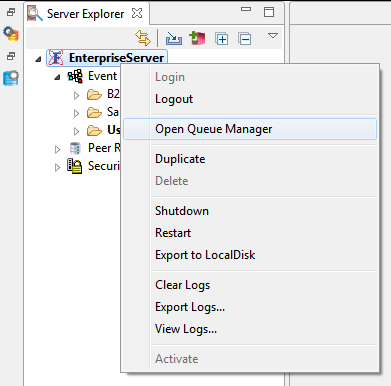
Figure 1: Open Queue Manager
Queue Manager dialog is opened showing all the event processes in the Event Process Repository in the left pane highlighting the running processes in bold letters. On the right pane, a table is shown which displays the queues with undelivered messages.
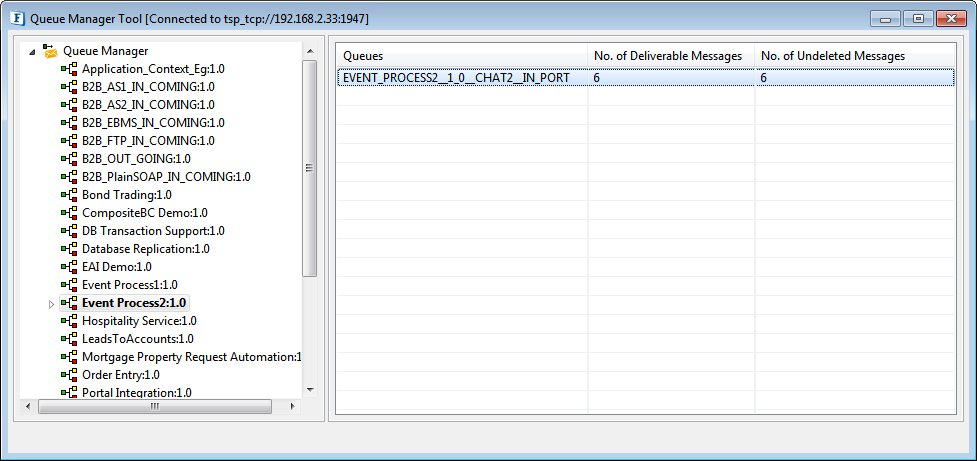
Figure 2: Queue Manager Dialog
The figure below shows a sample running Event Process with 2 chat components. If chat2 component is stopped and messages are sent from chat1 component, then the messages are stored on the in-port queue of chat2 component.
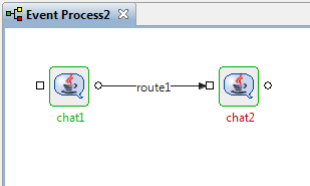
Figure 3: Sample Event Process
The undelivered messages on the chat2 in-port queue can be seen by selecting the queue in the left pane. Pagination feature is available at the bottom of the table to navigate through the messages.
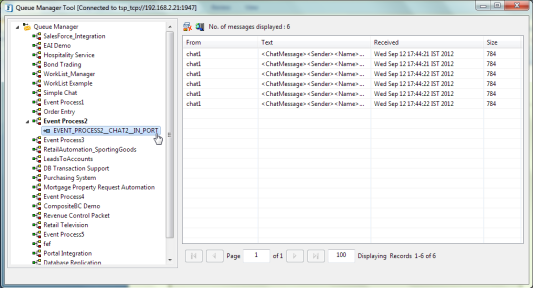
Figure 4: Messages on selected queue
Document State Properties
To view Properties of the messages, Double-click on the message. If the message contains any file attachments, go to Attachments tab, select the file attachment and use "Save As…" to save the attachment on the local disk.
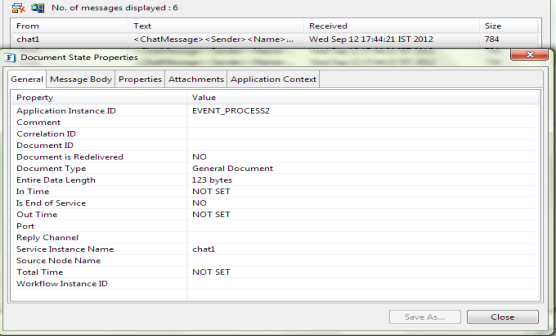
Figure 5: Document State Properties
Delete Messages
One or more messages can be deleted by selecting the messages and choosing the Delete option using the right-click menu as shown in figure 6 or all the messages can be deleted by clicking on Purge all messages button available at the top of the table as shown in figure 7.

Figure 6: Delete Message

Figure 7: Purge all messages button
Refresh
Right-click on Queue Manager node and select Refresh to fetch all the newly added or modified event processes and undelivered messages. Specific Event Process node can also be refreshed by selecting Refresh on right-click menu of the event process node. This refreshes the queues in the event process.

Figure 8: Refresh
Search
The user can search messages by clicking on the Search button available at the top of the table.

Figure 9: Search button
User can search messages based on message text and also based on the size of the message by checking the Size button and giving the size in terms of bytes.
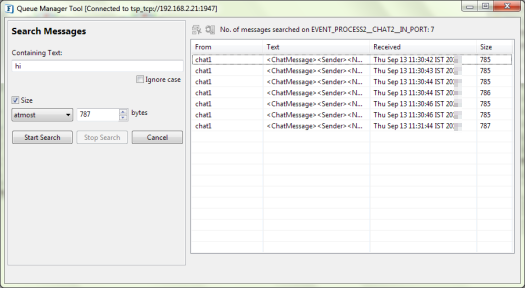
Figure 10: Search Messages
User can stop the search by clicking on Stop Search button when searching large number of messages.
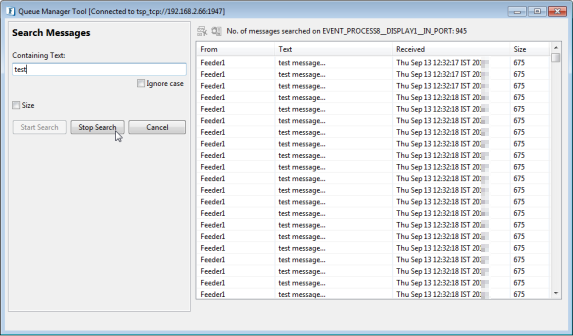
Figure 11: Stop Search